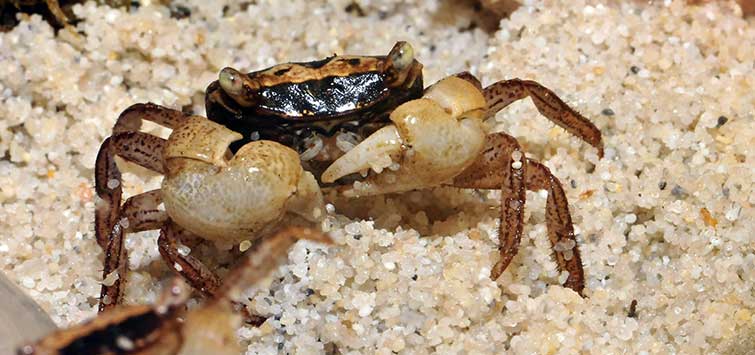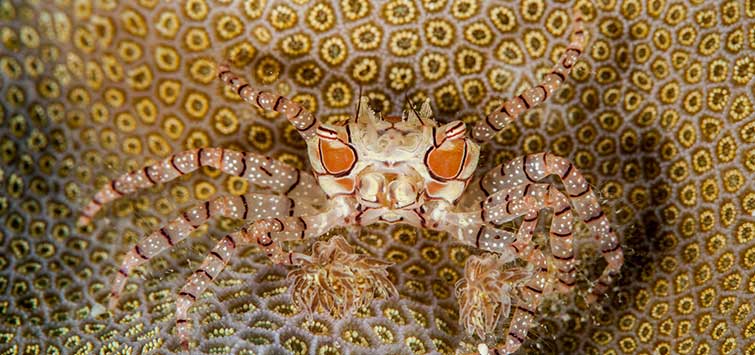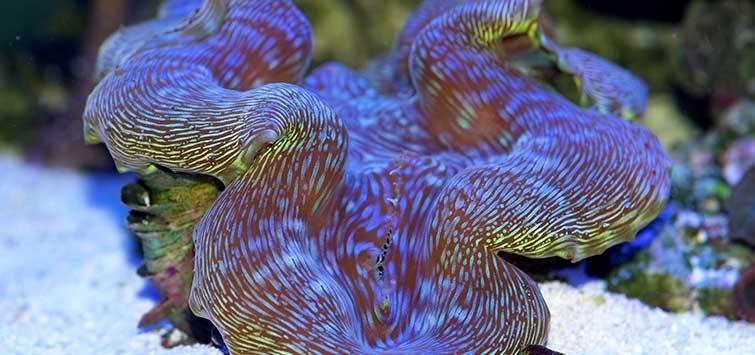A Lovely New Import: Marble Crabs Metasesarma obesum
Author: Uwe Dost
The recently imported marble crab Metasesarma obesum is a small crab that makes a good choice for terrariums. Marble crabs are widespread in the Indo-Pacific region. Comparable to hermit crabs, they live on land and hide under leaves, driftwood, or dig small holes in sandy ground. They settle on many islands in the Indo-Pacific on beaches that often have no fresh water.
Morphology
When I bought my first marble crabs and researched them, I found widely varying data regarding their sizes—they ranged anywhere from 3 to 4 cm (1¼ to 1½ inches) up to as much as 8 cm (3 inches). Ng & Schubart recorded the dimensions of the carapace (body) of the crab to be 14.3 x 13.5 cm (5½ x 5¼ inches). The specimens I saw up until that point had all been longer than 2 cm (¾ inch).
Marble crabs exhibit wide variations in color and pattern. Some I found were very bright, monochromatic, whitish animals with nearly no pattern on the carapace, but there were also others that exhibited some pink coloration with heavy spotting. Some specimens are almost entirely black. Just a few weeks ago, a new lemon-colored variant was imported. The color of the crab seems to be strongly related to the biotope where it was collected.
In Nature
I found that the marble crab lives on islands without rivers or other sources of fresh water on wide gravel and sandy beaches. They settle in higher regions that are not influenced by the tide or areas where water doesn’t reach even when the island floods, and reside between stones, leaves, branches, and broken pieces of coral. The holotype was collected above the beach between bits of broken coral. But in contrast to my findings, the Crustacea database placed these crabs near rivers and a pond used for aquaculture. I couldn’t find a picture of their habitat online.
A friend had told me during the summer of 2009 that he planned to travel to Thailand. I told him to enjoy his holiday but also instructed him to look for crabs when he visited the beaches and rivers. I have asked travelers many times in the past to take pictures of animals or landscapes, but even when they earnestly promised they would, things managed to fizzle out—but to my surprise, my friend Martin not only found marble crabs, he was able to take pictures of them and their biotope.
He found the crabs at Had Lek Beach (which roughly translates to small sandy beach) in Khao Lak-Lam Ru National Park, an area where the beach borders a rainforest along a small creek. A travel guide describes this beach as being famous for its freshwater lagoon and rich wildlife. Here in the early morning hours, you can watch macaques eating crabs. He found the crabs hidden under leaves and wood on sandy ground.
Taxonomy Notes
In 1851, Dana described a crab from an island north of Borneo that was seen in the Balabac Strait under the name Sesarma obesum. Serene listed this species under the genus Chiromantes, but he was doubtful about this classification and advised that they should be counted to the genus Metasesarma. Meanwhile, the type specimen (holotype) got lost.
Ng & Schubart compared specimens of Metasesarma rousseauxi from an island north of Sabah, which figured significantly in Dana’s work. After comparing the specimens, they came to the conclusion that they were all one species.
Therefore, the species that was originally described as M. rousseauxi was actually a synonym of Sesarma obesum. A male collected in 2000 was fixed as the new type specimen of the species Sesarma obesum, and the species was ultimately moved into the genus Metasesarma. Since they are widespread in the Indo-Pacific region, the possibility exists that there are multiple species, but this has not been determined yet.
Keeping Marble Crabs
At home you can keep three to five marble crabs (one male and two to four females) in a tall tank at least 40 cm (15 inches) high. Two males will grapple each other and the weaker crab will try to avoid the dominant one. A layer of sand, some leaves, roots, and pieces of wood to serve as hiding places, as well as two dishes of water—one with fresh water and one with sea water—will complete the setup. Temperatures between 20° to 28°C (68° to 82°F) are suitable, and I spray some water once a day to increase the humidity.
The crabs can be seen during the day as they stroll around looking for food, but they are a little shy and will run quickly to shelter if your movements attract their attention. They eat all kinds of fish foods, such as different kinds of flakes and sticks, or thawed frozen fish foods, as well as vegetables or fruits. They prefer carnivorous food and will take pieces of worms or crickets. If you keep the crabs in open tanks they will try to climb out, so cover the tank completely. The crabs will molt on land.
The breeding of marble crabs is not easy when compared to the breeding of Geosesarma species of crabs. Female marble crabs produce many small eggs from which small larvae hatch. In nature the marble females, like many other land crabs, go to the shore to release their fry into the sea. If you have a saltwater tank, you can try to raise the crab fry using methods described for some mangrove or saltwater crabs.
Marble crabs are easy to keep and are very nice-looking crustaceans. If you are crazy for crayfish or crabs, these animals will be a good alternative or addition to hermit crabs.
See the full article on TFH Digital http://www.tfhdigital.com/tfh/201010/#pg89




